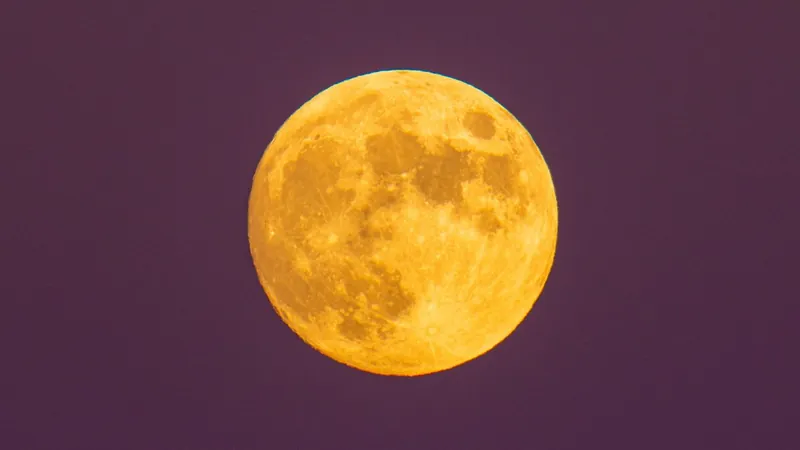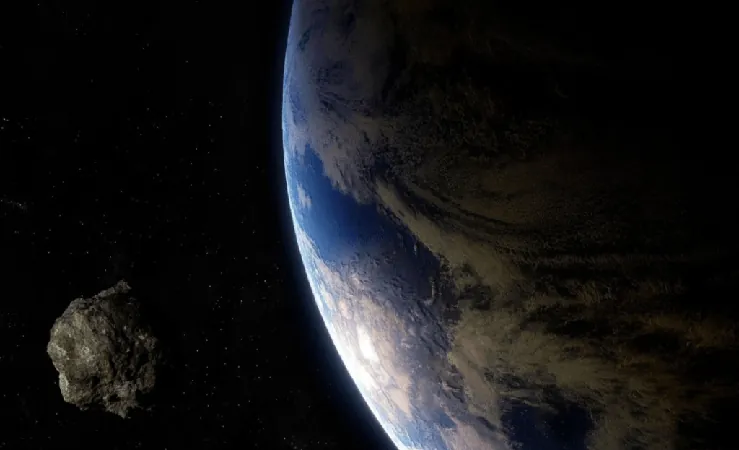
Prepare for the Epic Beaver Moon of 2024: The Last Supermoon of the Year Shines Next to the Enigmatic Pleiades!
2024-11-12
Author: Olivia
Prepare for the Epic Beaver Moon of 2024
Mark your calendars for an astronomical spectacle! The fourth and final supermoon of 2024, known as the Beaver Moon, will fully illuminate the skies on **Friday, November 15**. However, the premier viewing experience will occur on **Saturday, November 16**, when it rises majestically in the eastern horizon after sunset—don't miss it!
The Name and Significance of the Beaver Moon
The Beaver Moon gets its name from the industrious beavers that habitually construct their winter dams during this time in the northeastern United States. It’s also referred to as the Frost Moon or the Snow Moon due to the chilly temperatures that signal the end of fall and the onset of winter. For those familiar with Indigenous traditions, the Anishinaabeg people call this moon “Baashkaakodin Giizis,” translating to the “Freezing Moon”—a nod to the changing seasons.
A Conclusion to the 2024 Supermoon Series
Not only is this beaver moon a natural wonder, but it also marks the conclusion of a stellar phenomenon: the **2024 supermoon series**. This series included the **Sturgeon Moon** in August, the **Harvest Moon** in September, and the **Hunter's Moon** in October. A supermoon occurs when the moon's elliptical orbit brings it within 90% of its closest approach to Earth, known as perigee. This year’s Beaver Moon promises to be a sight to behold!
Timing for the Best Viewing Experience
While the moon reaches its official full status at **4:28 PM EST (21:28 UTC)** on November 15, the ideal conditions for viewing it are just after sunset on November 16. Across North America, expect the moon to rise approximately **20 to 30 minutes** after sunset, making this the key moment to witness its beauty.
Gaze Up at the Pleiades
As you gaze upwards, don’t forget to look for the dazzling **Pleiades star cluster**, popularly known as the "Seven Sisters." On the night of November 15, this sparkling group of stars will be located to the lower left of the Beaver Moon, and then shift to the upper right on the following night. For stargazing enthusiasts, capturing the Beaver Moon at moonrise can be magical, and utilizing binoculars or a backyard telescope may reveal intricate details on the lunar surface that the naked eye often misses.
Looking Ahead to the Cold Moon
Looking ahead, the twelfth and last full moon of the year will be the **Cold Moon**, which will appear on **December 15**. So, gear up for a month filled with celestial wonders and don’t let the Beaver Moon pass you by—it promises to be a breath-taking farewell to 2024's supermoon lineup!









 Brasil (PT)
Brasil (PT)
 Canada (EN)
Canada (EN)
 Chile (ES)
Chile (ES)
 España (ES)
España (ES)
 France (FR)
France (FR)
 Hong Kong (EN)
Hong Kong (EN)
 Italia (IT)
Italia (IT)
 日本 (JA)
日本 (JA)
 Magyarország (HU)
Magyarország (HU)
 Norge (NO)
Norge (NO)
 Polska (PL)
Polska (PL)
 Schweiz (DE)
Schweiz (DE)
 Singapore (EN)
Singapore (EN)
 Sverige (SV)
Sverige (SV)
 Suomi (FI)
Suomi (FI)
 Türkiye (TR)
Türkiye (TR)